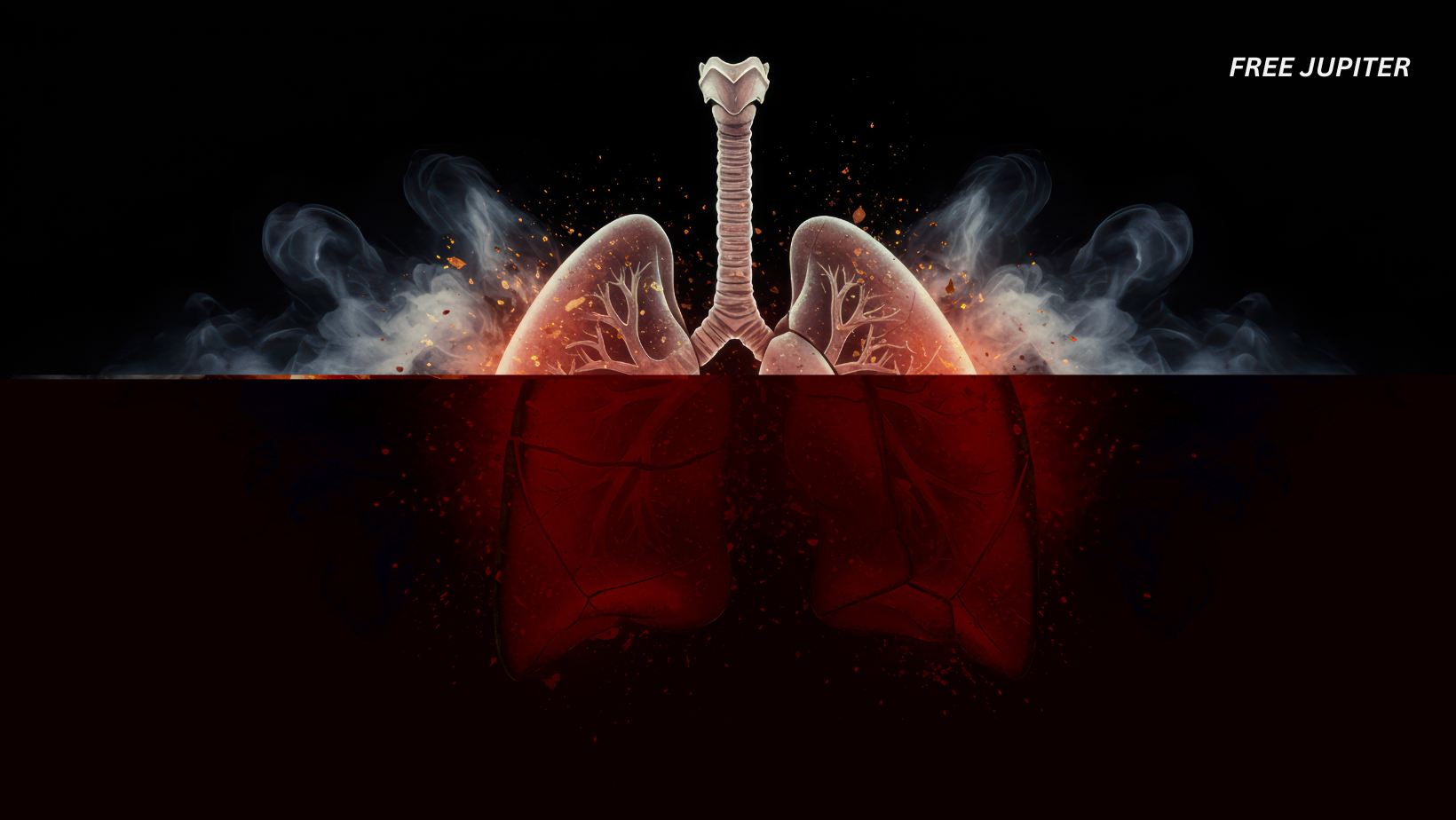Friendly Note: FreeJupiter.com shares general info for curious minds 🌟 Please fact-check all claims—and always check health matters with a professional 💙
For the longest time, we’ve thought of lungs as the body’s air filters — just quietly doing the important job of bringing in oxygen and getting rid of carbon dioxide. But it turns out, they’re multitaskers. In a fascinating twist that’s turning heads in the science world, researchers have discovered that our lungs aren’t just breath-makers — they’re also blood factories.
Yes, you read that right. Your lungs make blood.
This discovery, made by scientists at UC San Francisco, could reshape how we think about the inner workings of the human body. And it all started with a little green glow in a mouse’s chest.
The Lungs’ Hidden Talent: Platelet Production
Using a special type of microscope that allows researchers to peer into the living tissues of mice, scientists noticed something surprising: the lungs were teeming with platelet-producing cells. These cells, called megakaryocytes, were churning out more than 10 million platelets per hour — not in the bone marrow, where they’re usually found, but inside the lung’s delicate blood vessels.
Platelets are those tiny, sticky fragments in your blood that help it clot when you get a cut. Without enough of them, even a small scrape can turn into a dangerous bleed — a condition known as thrombocytopenia.
For years, medical textbooks have said that platelets come mainly from the bone marrow. But this study showed that in mice, over half of all platelets were being produced in the lungs. That’s a major rewrite of the body’s user manual.
Meet the Microscopic Blood Makers
The team behind this discovery used genetically modified mice whose platelets glowed green under the microscope. What they saw was unexpected: a bustling network of megakaryocytes in the lungs, looking like they were hard at work.
Until now, scientists assumed that any megakaryocytes in the lungs were just passing through. But these cells weren’t just tourists — they were residents, busy manufacturing platelets right where they were.
This was more than a casual observation. The researchers captured live footage of these lung-based cells actively releasing platelets into the bloodstream — millions of them. And nearby, they found even more surprises: dormant blood stem cells tucked away in lung tissue, waiting to be called into action.
Read more: Humans Are Still Evolving—And Our Teeth Might Be Disappearing: New Study
Blood Stem Cells? In the Lungs?
Yes. And they’re not just sitting there looking pretty — they’re functional, adaptable, and capable of filling in when bone marrow falls short.
To test how these lung-resident stem cells behave, the researchers performed a series of lung transplant experiments. In one case, they transplanted healthy lungs full of glowing megakaryocyte precursors into mice that couldn’t produce enough platelets. The result? A rapid flood of new platelets that kept going for months. That’s far longer than a single cell could survive — meaning these stem cells settled in and got to work.
In another jaw-dropping test, they gave mutant mice a healthy lung filled with tagged blood stem cells. These cells didn’t just stay put — they migrated into the damaged bone marrow and helped it rebuild a full range of blood cells, from immune fighters like B and T cells to neutrophils, the first responders of the immune system.
Why Does This Matter?
This isn’t just an interesting twist in lung biology — it’s a game-changer for how we understand the blood system as a whole.
For starters, it opens new doors in treating blood disorders like thrombocytopenia. If lungs can act as a backup platelet factory, maybe future treatments could focus on activating those lung-based stem cells — or even transplanting healthy lung tissue with functional blood makers.
It also raises big questions about how lung transplants affect a person’s blood system. If lungs contain stem cells capable of traveling to the bone marrow and building blood, could those cells have long-term effects in transplant recipients?
This could also influence how we approach stem cell therapies, which are used in treating everything from leukemia to autoimmune diseases. If the lungs and bone marrow are constantly exchanging stem cells, they might work together more closely than we thought.
The Lungs: A Biological Bioreactor?
So, why are lungs such a hotspot for platelet production? One theory is that the constant blood flow and mechanical stress in the lung’s tight blood vessels help megakaryocytes shed platelets more efficiently — sort of like squeezing toothpaste from a tube. Another idea is that there’s a unique chemical environment in the lungs that activates these cells in a way we don’t fully understand yet.
Whatever the reason, the lungs seem perfectly suited to the job. They’re like nature’s version of a high-tech manufacturing plant, quietly pumping out life-saving blood components while we go about our day.
A New Chapter in Human Biology
This groundbreaking discovery isn’t just a footnote in medical textbooks—it’s a fresh page in how we understand the human body. For generations, biology students were taught a neat compartmentalized version of how our organs work: the heart pumps, the lungs breathe, the bone marrow makes blood. But nature, as it turns out, rarely sticks to our labels. What scientists have now uncovered flips that tidy narrative on its head.
The realization that the lungs play a key role in blood production—specifically in generating platelets and housing stem cells—suggests our organs may be far more interconnected and multifunctional than previously thought. It’s not just that the lungs have a “bonus” feature; it’s that our understanding of biology has missed an entire function happening right beneath our noses. Quite literally.
Read more: Scientists Discover a Bacteria That Eats Toxic “Forever Chemicals”—Could This End Pollution?
Biology’s Unwritten Chapters Are Being Written in Real Time
Until recently, blood formation was thought to be the exclusive domain of the bone marrow. Full stop. But this discovery introduces a more fluid, decentralized system—one in which blood-forming stem cells may travel between organs, responding to the body’s needs in real-time. It’s as if these stem cells are enrolled in a foreign exchange program, “studying abroad” in different tissues and picking up specialized tasks along the way.
This dynamic reshaping of how stem cells behave opens new doors in regenerative medicine. Imagine treatments that don’t just replace damaged bone marrow, but that also tap into the lung’s built-in stem cell reservoirs. It repositions the lung not only as a vital organ for respiration but as a central player in maintaining and restoring the body’s blood supply.
Rethinking Organ Functions and Collaboration
We’ve long known that organs talk to each other—hormones and signaling molecules are constantly bouncing around the body, keeping everything in sync. But now, it seems organs may also share responsibilities in a much more hands-on way. The lungs, for instance, might act as an emergency reserve or overflow center when the bone marrow is struggling.
This new model forces us to think less in silos and more in systems. It suggests that the body functions like a living ecosystem where roles overlap, backup systems are built in, and adaptability is key. The idea that one organ could step in to help another isn’t just inspiring—it’s evolution at its most efficient.
Implications for Transplants, Diseases, and Future Therapies
There’s also an important clinical angle here. If lungs carry blood-producing stem cells, then lung transplants might be doing more than just helping people breathe—they may also be silently reshaping the recipient’s immune system and blood supply. That could explain certain transplant outcomes doctors haven’t fully understood before. It might even lead to new strategies for transplant compatibility, or new ways to minimize immune rejection.
The ripple effects stretch even further. This could reshape how we treat conditions like leukemia, anemia, or immune deficiencies. Could lung-derived stem cells be harvested and redirected for therapeutic purposes? Could we engineer lungs to be mini blood factories outside the body?
The possibilities may not be far off.
A Reminder That the Body Still Has Secrets
For all the scientific progress we’ve made, discoveries like this are a humbling reminder that the body is still full of mystery. Even something as seemingly well-understood as the lung is capable of surprising us. It urges researchers to go beyond traditional boundaries and look at familiar organs with new eyes—and better tools, like the high-resolution live imaging used in this study.
This is not just an update to a dusty biology chapter—it’s a bold rewrite. It signals a future where medicine is more holistic, where organ systems are treated as collaborators rather than isolated units, and where the lungs finally get the credit they deserve—not just for keeping us breathing, but for keeping us alive in more ways than one.
Read more: How Eating Zucchini Every Single Day Affects Your Body, According to Science
So, What’s the Takeaway?
Your lungs are doing more than just helping you breathe — they’re helping you live, literally. They’re not just air filters, they’re blood producers, stem cell reservoirs, and possibly unsung heroes in your immune system.
This discovery has big potential for medicine, from improving platelet treatments to rethinking how we use stem cells. And it’s a perfect reminder that the body still has secrets left to uncover — sometimes hiding in plain sight, right under your ribs.
Disclaimer: The information in this article is for general informational purposes only and is not medical advice. We are not doctors, and this website is run as a family hobby project. Always consult a qualified healthcare professional before making decisions about your health. Please fact-check any claims and use this content as a starting point, not a substitute for professional guidance.










